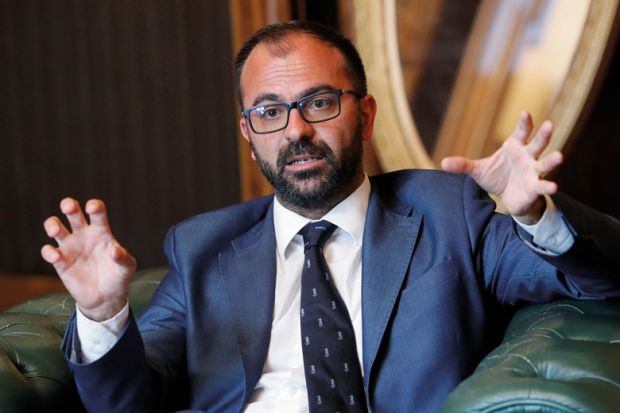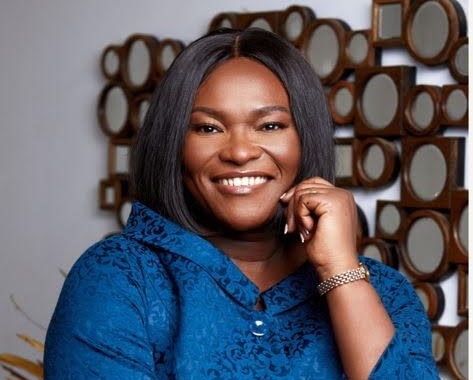…Ways rethink our economies beyond COVID-19
When I began the journey that would ferry me, from a young university graduate to the corporate world of banking, and thence, into media and the world of business, I had the idealized outlook of an African citizen: passionate about current affairs, concerned about the future and determined to make a difference in my country and continent. I believed that becoming a businesswoman in the media industry was the best way to equip myself to make that difference. Now, as I mark my fiftieth milestone along life’s journey, I cannot help but wonder what a tragic defeat is immured in our successes and the goals we have set to measure them.
When, in early 2020, the COVID-19 pandemic began its devastating swathe around the world, I found the manner in which countries argued with themselves wholly inadequate. Throughout 2020 there was a barrage of data on economic growth. By the end of December 2020, the focus began to shift to more desolate conclusions about the economic impact on livelihoods. A new poverty had arisen in a period of less than a year as businesses abandoned large numbers of their workforce. The unskilled, especially, had been marooned. Many of those remaining were put on part-time employment contracts. But what struck me was how the pandemic was being consistently portrayed as a ‘growth paradox’.
As I probed the different ‘models’ governments had more or less uniformly designed to balance their growth and social welfare/ healthcare priorities, the true nature of the crisis came to me in a totally unexpected manner. Between the privileged and the millions who had fallen into penury stood a fragile social security and healthcare system in most countries of the world. Without sustainable livelihoods, growth, a dry economic term, was the starting gun for a roller-coaster ride into the unknown. The policy debate by this time was that locking down economies was bad for business and employment; keeping them open was detrimental to lives.

It was an extraordinary situation that summoned deeper introspection about the continent and world we live in. I found the growth theoretical framework – and the data used to prove it – absurdly narrow and biased in its ideological and numerical assumptions. The irony is that poverty and inequality in Africa (and the rest of the world) grew because the growth economy had failed. Perhaps the starkest manifestation of the ‘growth myth’ is the official smokescreen of economic data, what is referred to with gentle understatement as ‘externalities’. The most incredulous stretch of all the data was a series of calculations in late 2020, adjusted for the COVID-19 impact, by the World Bank and the International Monetary Fund (IMF) about Gross Domestic Product (GDP) projections for 2021. In a classical market economy, GDP, by definition, is simply the measure of the total gross value of all official goods and services produced and consumed within an economy, usually calculated over quarterly and annual periods. In this theory, a larger GDP growth rate ought to be proportional growth to rising levels of human wellbeing. But the facts and logic were radically different to the official growth thesis we have all come to accept as normal.
Year after year, since at least 2008, GDP data has sat incongruously alongside rising levels of poverty and inequality. Yet the myth that the actual measure of GDP is somehow inviolable has been something of a taboo subject in media reports and expert commentaries on COVID-19. When the World Bank global GDP data was released, I wondered whether the bank’s assumptions were a true reflection of the costs of the COVID-19 pandemic.
Nowhere were these costs and their impact on economies more apparent than a study in 2006 by the political economist Lorenzo Fioramonti. Backtracking official World Bank GDP data since 1975, Fioramonti deducted the negative social and environmental consequences of global GDP, treating them as a loss rather than a gain by producers. The official model used to calculate GDP data, he suggested, was designed to fit the outcome of a model of ‘growth at all costs’.

The resulting imbalances were startling. The simple deduction of some environmental costs reduced global economic growth to zero. Fioramonti came to the profound conclusion that official calculations of growth were a circle of fictions, designed to exclude what the Peruvian economist Hernando de Soto in his thrilling book, The Mystery of Capital, described as ‘dead capital’ – the scourge of joblessness that did not count. “This was the real economic miracle of growth,” Fioramonti argued, “one that is completely offset by the social and ecological debt we face today.”
And there you have the crux of the problem. The weakness was evident in the facts. Before the onset of COVID-19 one person in eight, globally, did not have enough to eat. Six million children under the age of five died, more than half those deaths due to easy-to-treat conditions like malaria in Africa. Two billion people lived on less than $3 a day and 70 million men and women were unable to find work. Deprivations such as these were aggravated by the 2008 financial crash and magnified by the COVID-19 pandemic, robbing many more people of their jobs, homes, savings and security. To these extremes of human circumstance, add the deepening degradation of our planetary home.
Either by design or sheer coincidence, the results of Fioramonti’s work came at a time of growing recognition, globally, that there was something systemic about the crisis all along. By the time of the 2008 global financial crisis and the signing of the Paris Accord on Climate Change by 196 countries eight years later, the massive economic, social and environmental imbalances had become real concerns. Not least of these concerns was a recognition that the depletion of energy and other natural resources demanded a shift away from the conventional consumption model on which the growth doctrine had been based for at least a century. Fioramonti went a step further; his study vividly described a system in a deadly crisis. it was a visionary tract that offered the reader a glimpse into the atrophying ‘growth-first’ economy.
By the close of 2020 the world seemed to be groping implacably towards a new, albeit fragile and deeply contested era. The brutal climax of the 2008 financial meltdown and the COVID-19 pandemic were giving way to a grim recognition of the real perils and moral ambiguities of a transition that seemed to be under way. But transition to where, from what – and what was the change? I knew that answering these questions required coming to terms with the real content of the growth doctrine.
The pandemic was a wake-up call. On the one hand we were being bombarded with data that exposed the social and environmental excesses of the growth doctrine, from rising inequality to unemployment and poverty. On the other hand, there was a disconnect, I realized, that ran far beyond the pandemic, visible in the gulf between the preoccupations of mainstream economic theory and growing real-world crises such as financial instability, global inequality, food security and climate change.
These are the trends that are shaping humanity’s prospects beyond the pandemic and for the rest of the 21st century. So what kind of thinking do we need for the journey ahead?
“Today we have economies that need to grow,” wrote the Oxford economist Kate Raworth, “whether or not they make us thrive: what we need are economies that make us throve, whether or not they grow.” That radical flip in perspective invites is to become agnostic about growth, and to explore how economies that are currently financially, politically and socially addicted to growth could learn with or without it.
To get our bearings, let’s put GDP growth aside and start afresh with a fundamental question: what enables human beings to thrive? A world in which every person can lead their life with dignity, opportunity and community – and where we can all do so within the means of our life-giving planet. In other words, we need to get into the ecosystem that sustains life and livelihoods rather than externalise it.
My intention here is not to lay out specific prescriptions or institutional fixes. I promise no immediate answers for what to do next, and they are not the whole answer. Given the speed, scale and uncertainty of change that we face in the coming years, it would be foolhardy to attempt to prescribe now all the policies and institutions that will be fit for the future: the coming generation of thinkers and doers will be far better placed to experiment and discover what works as the context continually changes. But I am convinced that they are fundamental to the radically different way of thinking about economies and business that this era demands. What we can do now – and must do well – is bring together the best of emerging ideas, and to create a new economic mindset that is never set but always evolving. What is possible and necessary is a new lens and measure of growth that challenges conventional assumptions that the blind pursuit of GDP leads to economic wellbeing. The first step is to acknowledge the problem. The second step is a more inclusive measure of prosperity. Only through a new lens will we see the entry points and new policy priorities that can guide our response to the myriad post-COVID twenty-first century challenges we face.
The task for policy makers, economic thinkers, corporate leaders and communities in the decades ahead will be to bring these ways of thinking together in practice, and to add to them many more. However, we tackle these interwoven challenges, one thing is clear: the growth doctrine and the official policy and business models it has spawned will play a defining role. In these extraordinary times, it is not only growth and the social security of the world that are imperiled. The theoretical framework underpinning the ‘blind pursuit of growth’ we have all come to accept is in crisis, too. The COVID-19 pandemic will, eventually, abate and end, but its consequences will linger. What lessons we learn will shape the minds of the next generation of policymakers, and, therefore, the societies we live in.
The pandemic has made one thing clear: The revolution in economics has begun. Its success depends not only on debunking old ideas and assumptions but, more importantly, on bringing forth the new. As the ingenious twentieth century inventor Buckminster Fuller once said, “You never change things by fighting the existing reality. To change something, build a new model that makes the existing model obsolete.”
I have taken up his challenge and invite you, my fellow citizens, to join me on this journey.










